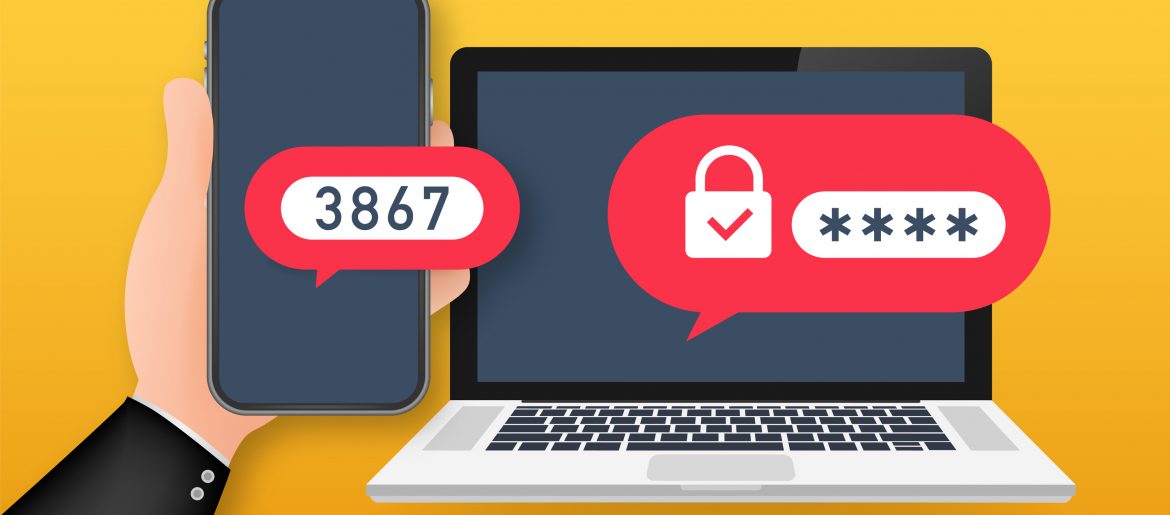
This also means that more attacks migrated to the cloud to target company infrastructure. In 2020, attacks on cloud accounts rose by 630%. Many of those attacks involved compromised or hacked passwords.
The best-proven safeguard against these types of cloud account breaches is multi-factor authentication (MFA).
MFA adds another requirement to grant access to an online account or cloud application. It is typically the entry of a unique code that is sent to the user’s device. In nearly all cases, the hacker is not going to have that user's device. Therefore, they are blocked from getting into the account.
Multi-factor authentication is vital because it is 99.9% effective at stopping fraudulent sign-in attempts. However, many small and mid-sized companies don’t use it because they run into employee resistance.
Employees are worried about another process causing them to take longer to access business applications and its impact on their workflow.
Only 27% of small businesses and 44% of mid-sized companies use MFA to protect their accounts.
How can you introduce multi-factor authentication smoothly and get your staff on board with the idea? We have several tips that can help.
Ways to Ensure a Successful Adoption of MFA
Have a Conversation With Employees About the Change
When a company tells employees that they need to adopt a new process but don’t take the time to have a conversation or guide them through the change, there is a very good chance that it will fail.
People are naturally resistant to any type of forced change to their routine. You may be getting resistance just because it is a change (not because of MFA specifically).
Use change management practices like getting feedback from employees about the upcoming implementation and addressing their concerns. Many times people just need to know how a change is going to benefit them and be given the chance to have a conversation about it before they’re ready to adopt it.
Offer to Give Employees a Choice of MFA Type
If people have a choice in how they implement a new process, it helps to reduce resistance because it gives them some ownership over how it impacts their workflow.
Provide your team with options for how they use the MFA system. Options can include using text message, a device app or using a security key that inserts into devices.
Conduct a Training Session
Even though multi-factor authentication is a straightforward process, you should still conduct a training session with your staff. This gives them a chance to ask questions and work out any confusion that they may have about the process.
If users are trained, they feel more confident that they can pick up a new process and this makes them less likely to push back on MFA implementation.
Provide Post “Go-Live” User Support
For any type of business change, it is critical to provide support to staff after they begin using the new process. After they have been using MFA on a daily basis, they will run into a majority of their issues that need troubleshooting. It is all part of a new introduction to their workflow.
It’s a good idea to provide at least 30 days of post-go-live support for users so that they have someone who they can contact when those inevitable questions pop up after they start using MFA. You can greatly decrease the immediate resistance that can appear after a new process is implemented by ensuring users have dedicated support to guide them.
Add a Single Sign-On Solution
Both companies and employees worry about the extra time that MFA takes and might wonder whether the hit to productivity is worth it for the IT security benefits. You can address time concerns by implementing a single sign-on application along with MFA.
SSO provides a single portal through which employees can log in to their work apps using MFA. They only need to sign in once to gain access to all of their applications. This improves productivity and user experience.
Celebrate Security Improvements
You can measure the benefits of MFA by the smaller amount of account takeovers or the fewer problems with the login experience and provide that information to your team.
When you celebrate the security improvements and show appreciation for their efforts in adopting MFA, your team is more likely to remain supportive of the process and see its value to them and to the organization as a whole.
Implement MFA and SSO With Help From Sound Computers
Don’t leave your cloud accounts unprotected! Sound Computers can help your Connecticut business with the effective implementation of MFA and single sign-on to boost security and efficiency.
Contact us today to schedule a free consultation. Call 860-577-8060 or reach us online.
